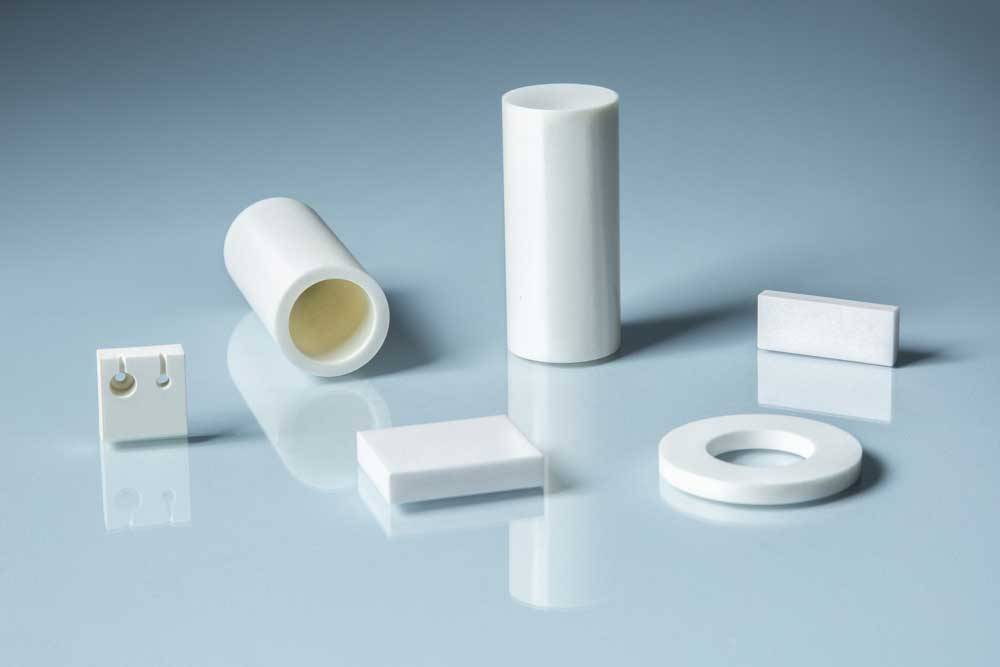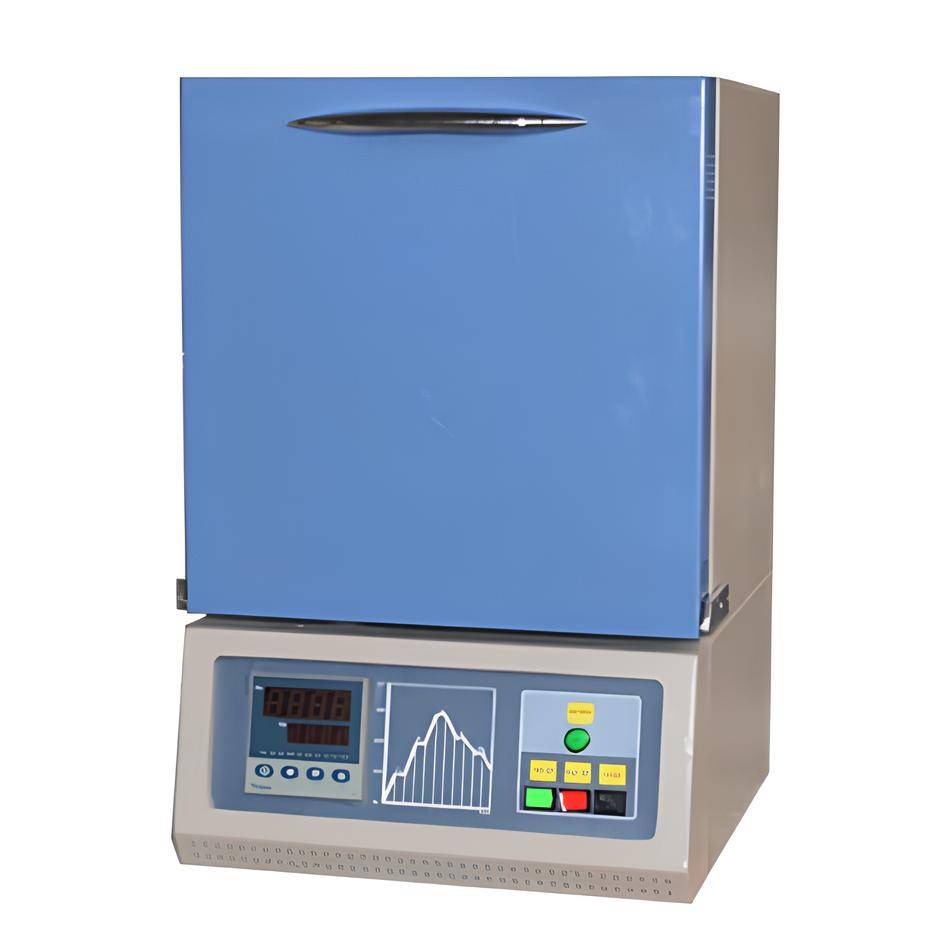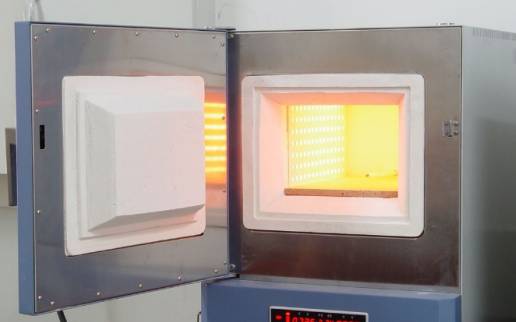Table of Contents
- Delving into the Applications of Muffle Furnaces: A Multifaceted Tool
- Types of Muffle Furnaces: Tailoring to Specific Needs
- Essential Features and Benefits of Muffle Furnaces: Unparalleled Performance
- Operating a Muffle Furnace: A Step-by-Step Guide
- Essential Factors to Consider When Purchasing a Muffle Furnace
- Troubleshooting Common Issues with Muffle Furnaces: Resolving Challenges
Delving into the Applications of Muffle Furnaces: A Multifaceted Tool
Muffle furnace serve as invaluable tools in a wide spectrum of industries and research domains, offering precise temperature control, uniform heating, and controlled atmosphere for heat treatment and other high-temperature applications. Their versatility makes them indispensable in sectors such as biomedical, ceramics, glass, pharmaceutical, plastic, and textile, to name a few.
Industries That Benefit from Muffle Furnaces:
-
Biomedical: Muffle furnaces are employed in sterilizing laboratory equipment, annealing glassware, and heat treating surgical instruments.
-
Ceramics: They are crucial for firing ceramic products, creating glazes, and sintering components.
-
Glass: Muffle furnaces are used in glassblowing, fusing, and annealing processes.
-
Pharmaceutical: They are utilized for sterilization, drying, and heat treatment of pharmaceutical products and components.
-
Plastic: Muffle furnaces are employed in curing plastic materials, heat-setting plastics, and welding plastic components.
-
Textile: They are used in heat setting fibers, curing dyes, and finishing textiles.

Benefits of Using a Muffle Furnace:
-
Melting Glass: Muffle furnaces provide precise temperature control and a controlled atmosphere for melting glass, ensuring the production of high-quality glass products.
-
Creating Enamel Coatings: They are used in the application of enamel coatings on metal surfaces, providing a durable and protective finish.
-
Technical Ceramics: Muffle furnaces are essential for sintering technical ceramics, which are used in various electronic and industrial applications.
-
Soldering and Brazing: They are employed in soldering and brazing processes, ensuring strong and reliable joints between metal components.
-
Heat Treating Metals and Alloys: Muffle furnaces are widely used for heat treating metals and alloys to enhance their properties, such as strength, hardness, and ductility.
Exploring the Benefits of Custom-Built Muffle Furnaces:
For unique applications or productions, consider a custom-built high-temperature muffle lab furnace. You can build a custom high-temperature muffle furnace solution to meet the exact specifications or requirements for your application or production. Custom equipment enables the success of your product development and testing process outcomes.
Conclusion:
Muffle furnaces are indispensable tools in various scientific and industrial fields, providing precise and controlled high-temperature environments for a wide range of applications. Their versatility, reliability, and ability to deliver consistent results make them essential equipment for laboratories and industries worldwide.
Types of Muffle Furnaces: Tailoring to Specific Needs
Muffle furnaces are indispensable tools in laboratory settings, providing controlled heating environments for a variety of applications. These furnaces come in various types, each designed to cater to specific requirements and offer distinct advantages.
Box Furnace: The Versatile All-Rounder
Box furnaces, also known as high-temperature furnaces, are the most common type of muffle furnace. They feature a metal box construction with a heating chamber and a muffle inside, which houses the material being heated. Heating elements are positioned outside the muffle, and a temperature controller ensures precise temperature regulation.
Box furnaces excel in versatility, making them suitable for a wide range of high-temperature applications. Their spacious interiors can accommodate various sample sizes and shapes, and they are commonly used for processes such as gravimetric analysis, sintering of small organics, quantitative analysis, and sample volatility studies.

Tube Furnace: A Specialist for Continuous Processes
Tube furnaces are designed for heating small samples in an inert atmosphere, making them ideal for processes requiring precise temperature control and minimal contamination. These furnaces consist of a cylindrical heating chamber with a muffle inside, where the material to be heated is placed. Heating elements surround the muffle, providing uniform heating.
Tube furnaces are particularly useful for continuous processes such as chemical reactions and materials synthesis. They enable the precise control of temperature gradients along the length of the tube, allowing for precise heating profiles.
Crucible Furnace: Melting and Heat-Treating Made Easy
Crucible furnaces are specifically designed for melting and heat-treating small amounts of material. They feature a small muffle that can hold a crucible, which contains the material being heated. Heating elements are located outside the muffle, and temperature control is achieved using a temperature controller.
Crucible furnaces are well-suited for applications such as melting metals, alloys, and minerals, as well as heat-treating small components. Their compact size and efficient heating capabilities make them a valuable asset in laboratories and industrial settings.
Split Furnace: Easy Maintenance and Cleaning
Split furnaces stand out with their removable muffle, which can be easily taken out for cleaning or maintenance. This feature is particularly beneficial in applications where the muffle may become contaminated or damaged over time.
Split furnaces offer the advantage of easy maintenance and reduced downtime, making them a preferred choice for laboratories and industries that require frequent cleaning and maintenance procedures.
Choosing the right type of muffle furnace is crucial for achieving optimal performance and meeting specific application requirements. By understanding the distinct characteristics and capabilities of each type, users can make informed decisions that align with their research or industrial needs.
Essential Features and Benefits of Muffle Furnaces: Unparalleled Performance
Unravel the key features that make muffle furnaces indispensable tools in laboratories and industrial settings. Discover their high-temperature capabilities, uniform heating distribution, energy efficiency, safety mechanisms, and user-friendly controls. Explore the benefits they offer, including improved product quality, enhanced productivity, and reduced operating costs.
Precise Temperature Control: Muffle furnaces are equipped with advanced temperature control systems that enable precise and accurate temperature settings. This is achieved through high-quality heating elements, efficient insulation, and sophisticated temperature sensors. The ability to maintain consistent temperatures is crucial for various applications, ensuring reliable and reproducible results.
Uniform Heating Distribution: Muffle furnaces are designed to provide uniform heating distribution throughout the chamber, eliminating hot and cold spots. This ensures consistent heating of materials, reducing the risk of uneven processing or damage. Uniform heating is particularly important for applications requiring precise temperature uniformity, such as heat treating, annealing, and sintering.

Energy Efficiency: Muffle furnaces are engineered to be energy-efficient, utilizing innovative technologies to minimize heat loss and maximize energy utilization. This results in reduced operating costs and a smaller carbon footprint. The use of high-quality insulation, efficient heating elements, and optimized chamber design contributes to the energy efficiency of muffle furnaces.
Safety Features: Safety is a paramount concern in laboratory and industrial settings. Muffle furnaces are equipped with a range of safety features to protect users and prevent accidents. These features include automatic shut-off mechanisms, over-temperature protection, and safety equipment such as safety goggles and heat-resistant gloves. The incorporation of these safety features ensures a safe working environment and minimizes the risk of injuries or equipment damage.
User-Friendly Controls: Muffle furnaces are designed with user-friendly controls that make them easy to operate and monitor. Simple control panels, intuitive interfaces, and clear instructions allow users to set and adjust temperature, heating rates, and other parameters with ease. The user-friendly design enhances the overall efficiency and productivity of laboratory and industrial operations.
Durability and Reliability: Muffle furnaces are built to last, with high-quality materials and robust construction. They are designed to withstand high temperatures, chemical exposure, and demanding operating conditions. The use of durable materials and meticulous manufacturing processes ensures long-lasting performance and reliability, minimizing downtime and maintenance requirements.
Versatile Applications: Muffle furnaces are incredibly versatile and find applications in various fields, including metallurgy, ceramics, electronics, and materials science. They are used for a wide range of processes, such as heat treating, annealing, sintering, and drying. The ability to handle different materials and perform diverse processes makes muffle furnaces indispensable tools in various industries and research institutions.
By understanding and appreciating the essential features and benefits of muffle furnaces, users can make informed decisions when selecting and operating these valuable laboratory and industrial equipment. Muffle furnaces provide unparalleled performance, enabling precise temperature control, uniform heating distribution, energy efficiency, safety, user-friendliness, durability, and versatility. These features contribute to improved product quality, enhanced productivity, and reduced operating costs, making muffle furnaces indispensable tools in various scientific and industrial applications.
Operating a Muffle Furnace: A Step-by-Step Guide
Pre-Operation Checks and Preparations:
-
Safety First: Always wear appropriate personal protective equipment (PPE) when operating the muffle furnace, including heat-resistant gloves, eye protection, and a lab coat. Keep a fire extinguisher nearby and be aware of emergency procedures.
-
Read the Instructions Manual: Familiarize yourself with the manufacturer's instructions and safety guidelines for your specific muffle furnace model. This ensures proper operation and prevents accidents.
-
Environmental Conditions: Ensure the muffle furnace is placed in a well-ventilated area with adequate air circulation to prevent overheating and potential fire hazards. Avoid moist environments that can compromise the furnace's performance.
-
Initial Drying: If the muffle furnace is new or has been inactive for an extended period, perform an initial drying process. This helps remove any moisture or condensation from the chamber, preventing damage to the furnace and materials.
Setting Up and Calibrating the Furnace:
-
Temperature Control: Set the desired temperature using the furnace's control panel. Understand the temperature range and capabilities of your specific furnace model.
-
Calibration: Calibrate the muffle furnace regularly to ensure accurate temperature readings. This involves comparing the actual temperature inside the chamber with a known standard and making necessary adjustments.
-
Heating Rate: Select the appropriate heating rate based on the material being processed and the desired results. Rapid heating rates may cause thermal shock and damage to certain materials.
-
Loading Materials: Load the materials to be processed into the muffle furnace chamber, ensuring they are evenly distributed and do not touch the heating elements. Use appropriate crucibles or containers to hold the materials.
-
Monitoring the Process: Monitor the temperature and heating progress throughout the process. Make any necessary adjustments to the temperature or heating rate if required.
Safety Measures and Maintenance:
-
Regular Maintenance: Perform routine maintenance tasks, such as cleaning the muffle chamber and replacing damaged or worn-out components. Regular maintenance extends the furnace's lifespan and ensures accurate and consistent results.
-
Safety Precautions: Always wear appropriate PPE when operating the muffle furnace. Keep the area around the furnace clear of flammable materials and ensure proper ventilation.
-
Emergency Procedures: Familiarize yourself with the emergency procedures in case of accidents, such as fire or overheating. Know how to safely shut down the furnace and evacuate the area if necessary.
Conclusion:
By following these steps and adhering to safety guidelines, you can safely and effectively operate a muffle furnace to meet your experimental or industrial needs. Always refer to the manufacturer's instructions and maintain proper maintenance practices to ensure optimal performance and longevity of the equipment.
Essential Factors to Consider When Purchasing a Muffle Furnace

Muffle furnaces are essential laboratory equipment used for various applications, including ashing, heat treating, and sintering. Choosing the right muffle furnace is crucial to ensure safety, reliability, and optimal performance. Here are some important factors to consider when purchasing a muffle furnace:
1. Safety Features:
- Prioritize safety by choosing furnaces with features like self-diagnostic functions, auto-recovery after power failure, calibration offset, key lock function, automatic overheat prevention, and earth leakage breaker.
- Self-diagnostic functions can detect mechanical issues and include error alerts for sensor errors, memory errors, SSR short circuits, triac short circuits, heater disconnections, and main relay failure disconnections.
2. Temperature Range:
- Consider the temperature range required for your specific application. Muffle furnaces typically have a temperature range of 500°C to 1800°C, with some models reaching higher temperatures.
3. Chamber Size:
- Choose a furnace with a chamber size that accommodates your sample size and allows for proper airflow. Consider the maximum sample size and the number of samples you need to process simultaneously.
4. Heating Elements:
- Muffle furnaces can have different heating element configurations, such as resistance heating, silicon carbide heating, or molybdenum disilicide heating. Each type has its own advantages and disadvantages in terms of temperature uniformity, heating rate, and energy efficiency.
5. Insulation:
- Proper insulation is crucial for maintaining temperature uniformity and minimizing heat loss. Look for furnaces with high-quality insulation materials, such as alumina or silicon carbide, to ensure energy efficiency and accurate temperature control.
6. Temperature Control:
- Precise temperature control is essential for many applications. Choose a furnace with a PID controller or a programmable controller that allows for accurate temperature setting and monitoring.
7. Construction Materials:
- The furnace chamber and housing should be made of durable materials that can withstand high temperatures and resist corrosion. Common materials include stainless steel, ceramic fiber, and refractory materials.
8. Safety Compliance:
- Ensure that the muffle furnace complies with relevant safety standards and regulations in your region. Look for certifications such as CE, UL, or CSA, which indicate that the furnace meets specific safety requirements.
9. Maintenance and Calibration:
- Regular maintenance and calibration are essential for ensuring the accuracy, safety, and longevity of your muffle furnace. Choose a furnace with easy-to-access components and consider purchasing a maintenance contract from the manufacturer.
By carefully considering these factors, you can select a muffle furnace that meets your specific requirements and ensures safe and reliable operation in your laboratory.
Troubleshooting Common Issues with Muffle Furnaces: Resolving Challenges
Muffle furnaces are versatile laboratory equipment used for a wide range of applications, including ashing, annealing, and sintering. Despite their reliability, issues can occasionally arise, affecting their performance and safety. To ensure smooth operation and minimize downtime, it's essential to understand common problems and their effective troubleshooting techniques.

Temperature Fluctuations:
-
Cause: Faulty Thermocouple
- Solution: Inspect the thermocouple for proper placement and condition. Replace if damaged or worn.
-
Cause: Inadequate Insulation
- Solution: Check the furnace insulation for gaps or damage. Repair or replace as necessary.
-
Cause: Faulty Temperature Controller
- Solution: Verify the controller's calibration and settings. Replace if malfunctioning.
Heating Element Failures:
-
Cause: Overheating
- Solution: Ensure proper ventilation and avoid overloading the furnace.
-
Cause: Damaged Heating Element
- Solution: Replace the heating element if it shows signs of damage or wear.
-
Cause: Faulty Wiring
- Solution: Inspect the wiring for loose connections or damage. Repair or replace as needed.
General Troubleshooting Tips:
-
Regular Maintenance:
- Solution: Perform routine maintenance, including cleaning the furnace and checking for signs of wear or damage.
-
Proper Usage:
- Solution: Follow the manufacturer's instructions for proper operation and maintenance.
-
Safety Precautions:
- Solution: Always wear appropriate protective gear when operating the furnace.
-
Calibration:
- Solution: Regularly calibrate the furnace's temperature controller to ensure accurate readings.
-
Record Keeping:
- Solution: Maintain a log of maintenance and repairs to track the furnace's performance.
By addressing common issues promptly and implementing preventive measures, you can ensure the reliable operation of your muffle furnace, minimizing downtime and maximizing its lifespan.
Related Products
- 1200℃ Controlled Atmosphere Furnace Nitrogen Inert Atmosphere Furnace
- Mesh belt controlled atmosphere furnace
- 1400℃ Controlled Atmosphere Furnace with Nitrogen and Inert Atmosphere
- Controlled Nitrogen Inert Hydrogen Atmosphere Furnace
- 1800℃ Muffle Oven Furnace for Laboratory
Related Articles
- How Controlled Atmosphere Furnaces Improve Quality and Consistency in Heat Treatment
- Why Your Brazed Joints Keep Failing: The Invisible Saboteur in Your Furnace
- The Benefits of Controlled Atmosphere Furnaces for Sintering and Annealing Processes
- Exploring the Using a Chamber Furnace for Industrial and Laboratory Applications
- Atmosphere Furnaces: Comprehensive Guide to Controlled Heat Treatment
















